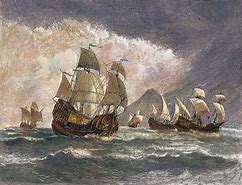
Photo Credit – google.com
What is Wallace’s Line?
The Wallace Line runs up the Lombok Strait between Indonesian Islands Bali and Lombok. It continues north through the Makassar Strait that separates Borneo(Kalimantan) and Celebes (Sulawesi), turns east into the Pacific and then back north again to encompass the Philippines.
The so-called Wallace’s line refers to a biogeographic boundary that separates Asian animals from Australian ones. It defines most Philippine plants and animals. The boundary was named after the 19th-century English naturalist, explorer and writer Alfred Russel Wallace (1823-1913) who first noted the zoological and geographical differences between the Asian and Australian continents.
During his journeys through the Malay Archipelago, he noticed a sudden change in fauna after crossing a 35 km. (20 mi) strait between the Indonesian islands of Bali and Lombok. He noticed a region where the species present did not resemble one another despite the islands having similar climates and habitats. All species present on the islands east of the line owe their biological heritage to species originating in Australia and those to the west owe their heritage to species originating in Asia.
The Asian and Australian landmasses used to extend much farther than they do today. Around 13,000 years ago towards the end of the last Ice Age, rising sea levels from melted glaciers turned areas of both into a string of islands. However, the native species on these islands are dictated by the landmasses they were originally connected to.
When sea levels sank during the last Ice Age, a series of land bridges cut through the shallow waters between Philippines’ Palawan and Mindanao and Indonesia’s Sulawesi and Borneo. These land bridges made possible a temporary alliance of flora and fauna, which led to adaptations and mutations in isolation when the land links sank again.

Photo Credit – citiviu.com
Sixty species of Bornean plants are found in the southern islands of Mindoro, Palawan and Mindanao. Flora identified with Sulawesi and Moluccas of Indonesia are widespread in the Philippines, mainly in the form of ferns, orchids and a great wood, the dipterocarp, which makes up the country’s primary tracts of forests, as it also does in Thailand, Indochina and Indonesia.
The same species of mousedeer, weasel, mongoose, porcupine, skunk, anteater and otter are in the wilds of Palawan and nearby Calamian islands and in Borneo’s interior. Species of Palawan shrews, as well as a rare bat found in Mindanao, have kin in Sulawesi.
Fish in the waters of eastern Sumatra and western Borneo are like those in southwestern Philippines, as are the fish between Mindanao and Papua New Guinea. Many Malaysian and Bornean birds make their home in Palawan.
There is evidence of an even older land bridge that connected northern Philippines with Taiwan at a time when that island was itself connected to the Asian mainland. The remains of the stegodon, a pygmy elephant, have been dug up here as well as in Taiwan.
References:
Discovermagazine.com
Insight Guide Philippines by Discovery Channel
Abc.net.au/science/
Google.com
Until next time. The Philippine story continues.






.jpg)
.jpg)